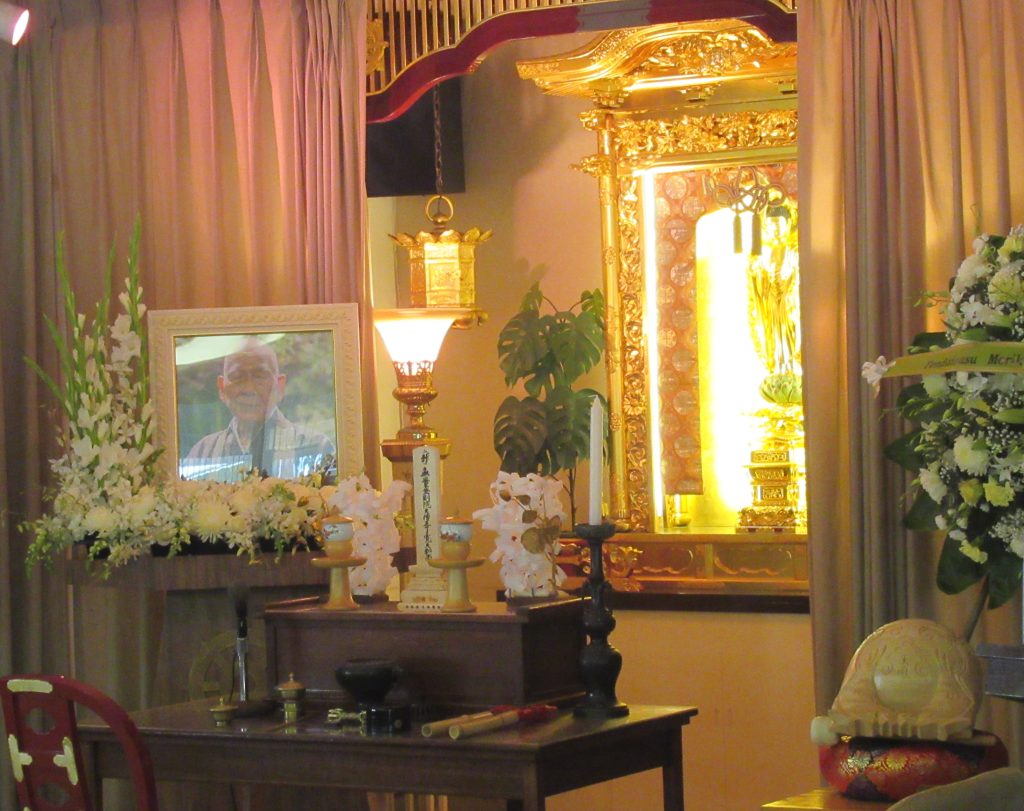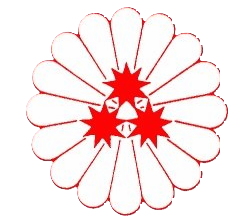南無 無量金剛院大僧正了寛大和尚
Namu Muryō Kongōin Daisōjō Ryōkan Daikashō
Reverend Jikai’s Late Master 師匠
Born in Fukushima Prefecture 福島県 in 1928, Arch-Bishop 大僧正 Ara Ryokan 荒了寛 formally entered the monastic institution at the age of ten. He completed a Doctorate Degree 博士号 specialising in Tendai Thought 天台学専攻 at Taisho University 大正大学大学院, and held esteemed positions at Japanese temples such as Sengakuin 仙岳院 (仙台), Seijokoin 清浄光院 (仙台), and Daifukuji 大福寺 (福島). In 1973 he crossed the seas 渡海 and became the Founding Abbot 開教総長 of the Tendai Hawaii Betsuin 天台ハワイ別院 or Tendai Hawaii Mission, and remained actively engaged in missionary work outside of Japan until his passing at ninety years of age, on the afternoon of the 16th of January, 2019.

Not only was Ara Sensei a devoted monastic, but he was also a celebrated Buddhist Painter and famous author. He wrote over thirty books in Japanese, and his artwork was exhibited in Honolulu, San Francisco, New York, Boston, Oklahoma and various Japanese locations. His books always attempted to bring the lofty and complex to a wide audience by speaking to the reader’s heart, and his artwork was of a unique and original style which blended traditional Buddhist methods with dyeing techniques. When Ara Sensei first arrived in Honolulu, there was only one Tendai household and the number of lay members at his temple in Honolulu always remained a small but solid group. And so, it was in order to support these members that Ara Sensei devoted so much of his life to writing and painting. The income which he painstakingly generated from these endeavours was crucial to the maintenance of the Hawaii Betsuin, and he underwent many hardships in keeping it running for so many years.
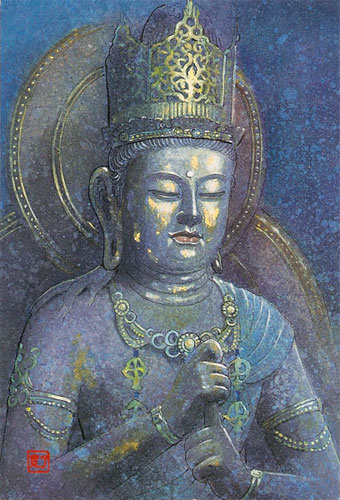
Ara Sensei didn’t limit himself to spreading the faith however, and he went on to establish the Japanese Language Institute in Waikiki, as well as the Japanese Cultural Classroom 文化教室 at the Betsuin itself. This Cultural Classroom offered calligraphy, Japanese painting, Tea Ceremony and Flower Arranging activities, in order to foster cross-cultural understanding. In 1978 he further established the Hawaiian Institute of Fine Arts, and formally used his art to introduce locals to Japanese culture. In his unique and original style, Ara Sensei produced many paintings inspired by his numerous trips to the ancient Buddhist centres of the Silk Road. His artwork captured Buddhist iconography in Northern India, Pakistan, Tibet, Dunhuang, Greater China and Japan.
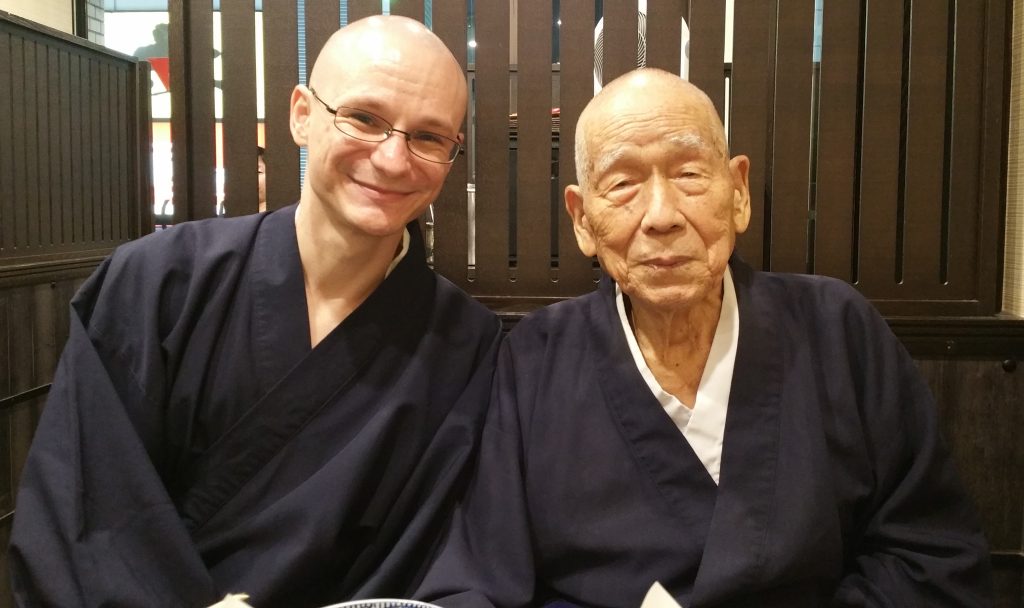
Ara Sensei was also responsible for establishing the Hawaiian Branch of the Ichigu Kai or “Light Up a Corner Society”, which vigorously strives to engage lay members of Tendai in the Bodhisattva Work initiated by Dengyō Daishi Saichō 傳教大師 最澄.
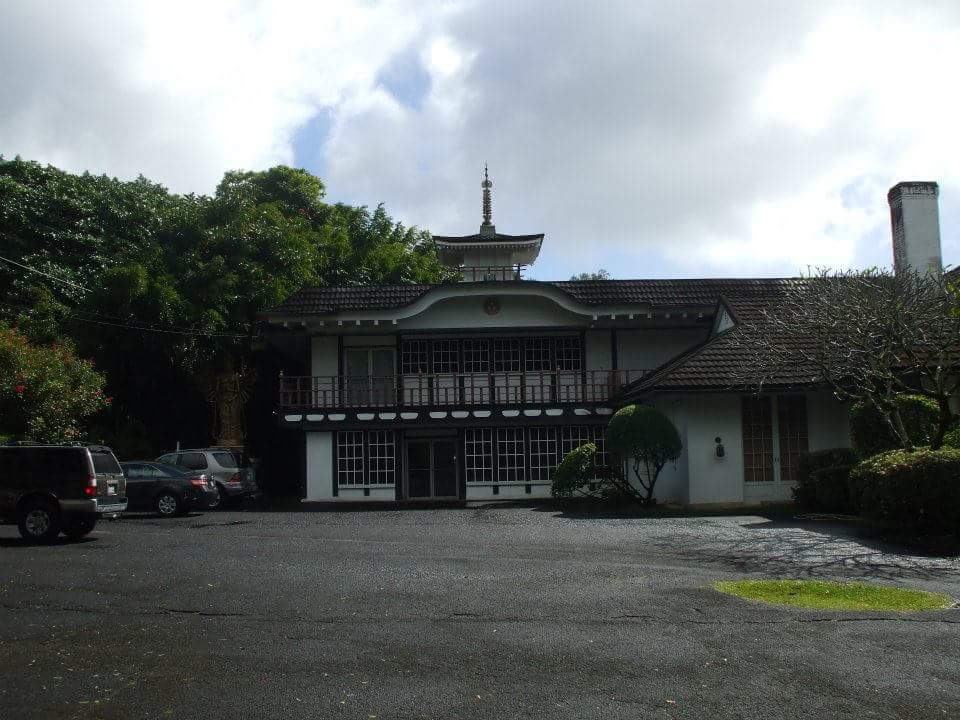
Ara Sensei was also renowned for his work in preserving and passing on the history of Japanese immigrants to Hawaii and the US. As part of these efforts, he filmed more than a hundred tapes preserving local anecdotal stories. And in order to understand and celebrate their sacrifices, he published volumes one and two of Japanese Eyes American Heart: Personal Reflections of Hawaii’s World War II Nisei Soldiers and Hawaii’s Japanese American Soldiers.
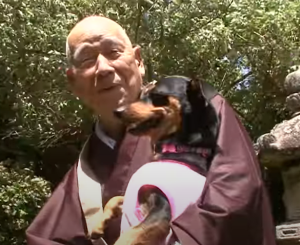
In 1986, Ara Sensei began the Honolulu Floating Lantern Festival ホノルルの灯籠流し, in order to promote Japanese American friendship. The floating of lanterns is traditionally conducted in Japan as a way of remembering the deceased. And so Ara Sensei established the Honolulu Floating Lantern Festival in the spirit of what he called Onshin Byodo 怨親平等 or the Equality of Friend and Foe. The idea was to invite people to reflect upon the great equaliser of death, and work towards ensuring that such conflicts never happen again. And as recognition of his efforts towards reconciliation, Ara Sensei was awarded the Japanese Minister of Foreign Affairs Award 外務大臣賞 in 2011.
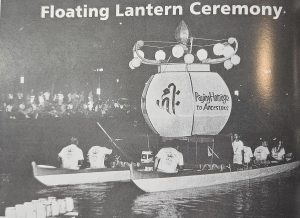
Ara Sensei was a most remarkable man, but I will most remember him for all of the love and kindness he showed this unworthy son (Jikai). Ara Sensei joked on meeting my mother, that I was now his son, and I cannot think of the man as anything less than a beloved father. I do not know what karmic acts I must have performed to have been so blessed with such a guide, but I am forever grateful that I had so dear a spiritual father, for so many years. When I looked at Ara Sensei, I saw the Masters of the Lineage stretching back to our Father, the Buddha- and this is no small feat. Everything I do, is the result of my Karmic Connection with this man, and I genuinely pray that all of you get to experience such a relationship at some point. Those who had the tremendous good fortune of meeting Ara Sensei, often couldn’t help but be moved by his smile and devotion. He served the Buddhas for eighty years, and I can still hear his voice as strong as ever, even though he has passed on. Very recently I made a pilgrimage to the Gouqingsi Temple 國清寺 on Mount Tiantai 天台山 in China, and I was pleasantly surprised by my Late Master once again. I found a picture of him adorning the walls of the temple with that same smile he always had, and was unexpectedly moved to tears, seeing him immortalised in such a place…
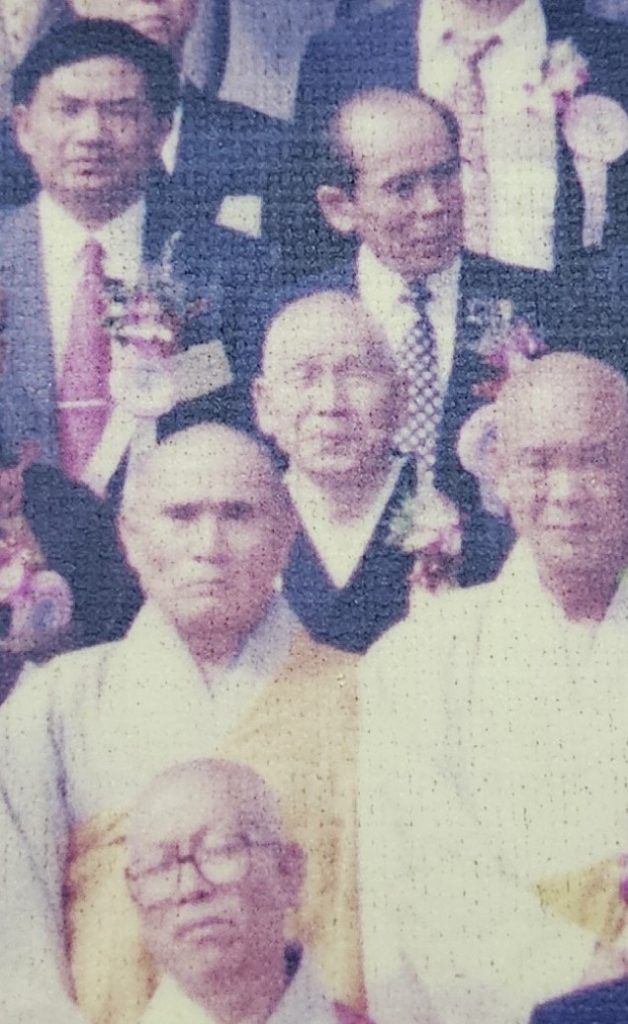
Ara Sensei always managed a perfect balance between the most down-to-earth humility on the one hand, and deadly seriousness and erudition when it came to the Buddha-Dharma on the other. Even now I struggle to explain the impact he had on people, and for those who were unable to meet him, it is nigh impossible to give a sense of his trademark blend of strictness and kindness. The best I can do in fact, is to close this recollection with two pieces from the man’s own words. The first chunk is an anecdote he told about when he first joined the monastery at ten years of age, and the second is a reflection he made a few years before his passing. The first gives a sweet sense of his playful kindness, and the second, of his unwavering sincerity and devotion to the Buddha-Dharma. I hope you all enjoy reading them as much as I have thinking about them:
(NOTE: the text in bold are notes added by Jikai to explain some of the Japanese humour in Ara Sensei’s words)
Ten Year Old Ara Sensei:
When I was not even ten years of age, I became a monastic acolyte at a nearby temple. The first short Buddhist sutra that the Master at this temple taught me, was the Shari Raimon 舍利禮文 or ‘Reverence for the Śarira (i.e. ‘relics’) Verse’. The first line reads: “I wholeheartedly bow my head in reverence, to the myriad perfect and complete virtues of Śākyamuni Buddha…” (NOTE: in Japanese the sounds of this line recited are: isshin chōrai, mantoku enman, shaka nyōrai…) However, I remembered it as “May I have a coin to buy a steamed bun, Śākyamuni Buddha?” with the ingenuity only a child can manage (NOTE: in Japanese the sounds of saying this are: issen chōdai, manjū katte, shaka nyōrai… Although this doesn’t work in translation, this sentence sounds quite similar to the opening line above when read in Japanese- and this is the joke). After I had memorised it, when lay members would visit the temple to pay respect to their family graves, I would chant this short verse three times. When I had finished, they would often remark “what a cute monk!”, and give me five or ten coins as offerings! I almost always used that money to buy steamed buns! And the joy of eating them in hiding from my Master, still brings memories flooding back…
こだわらない とらわれない, 2014 (translation by Rev. Jikai Dehn)
Ara Sensei’s Reflection on Eighty Years of Serving the Buddha:
In these ways and with the immense effort of all involved, we were able to create a place for people to come together. However, everything we have undertaken up to this point, is not the end of our work. I constantly travel between Japan and Hawaii giving lectures and exhibitions, and make every effort to ensure that the Betsuin finances are sufficient to maintain its operations. In all honesty, as I enter my elderly years, I sometimes wonder “how long will I be able to keep this up?”. But I am happy that I can still get around freely. And I am thankful to my parents for the health I’ve inherited, and give my utmost gratitude to Śākyamuni Buddha for all the guidance He has given me…
こだわらない とらわれない, 2014 (translation by Rev. Jikai Dehn)
南無 無量金剛院大僧正了寛大和尚
Namu Muryō Kongōin Daisōjō Ryōkan Daikashō
